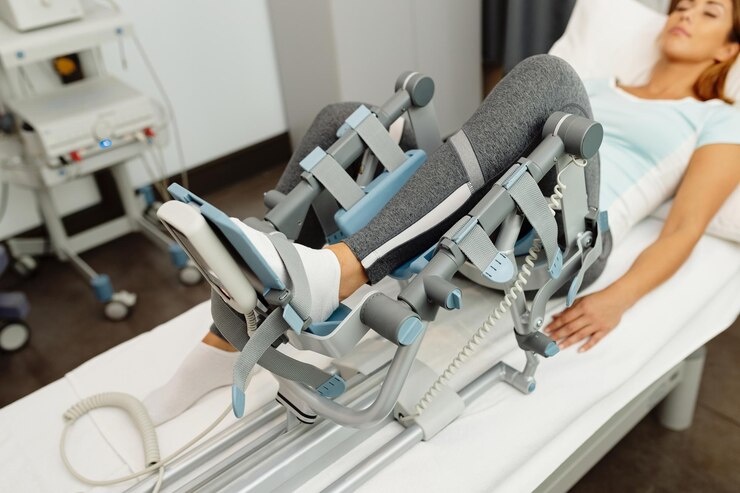Introduction
Pain relief, particularly in the realm of spinal issues, has long been a challenging frontier in medical science. Conditions such as herniated discs, sciatica, and degenerative disc disease can significantly impair one's quality of life, often leading individuals to seek out various treatments to alleviate their discomfort. Among the array of therapies available, spinal decompression has emerged as a promising method for relieving spinal pain and promoting healing. Central to this treatment is the use of spinal decompression tables, innovative devices designed to target and address the root causes of spinal pain. In this comprehensive exploration, we delve into the mechanisms behind spinal decompression tables, elucidating their functionality and efficacy in revolutionizing pain relief.
Understanding Spinal Decompression
Before delving into the specifics of spinal decompression table, it is crucial to grasp the concept of spinal decompression itself. At its core, spinal decompression is a non-invasive treatment aimed at relieving pressure on the spinal discs and nerves, thereby alleviating pain and promoting healing. This therapeutic approach is grounded in the principles of spinal traction, which involves gently stretching the spine to create space between vertebrae, thereby reducing pressure on spinal discs and nerves.
Mechanisms of Spinal Decompression Tables
Spinal decompression tables serve as the cornerstone of modern spinal decompression therapy, offering a controlled and precise method for applying spinal traction. These tables are equipped with advanced features and mechanisms designed to deliver targeted traction to the spine while ensuring patient comfort and safety.
1. Computerized Traction Control:
One of the key components of spinal decompression tables is their computerized traction control system. This system allows healthcare providers to customize the traction force, angle, and duration according to each patient's specific needs and condition. By leveraging advanced algorithms and real-time feedback mechanisms, computerized traction control ensures precise and effective treatment delivery, maximizing therapeutic outcomes.
2. Axial Distraction Mechanism:
At the heart of spinal decompression tables lies the axial distraction mechanism, which forms the crux of spinal traction. This mechanism applies controlled traction forces along the axis of the spine, gently elongating the vertebral column and creating space between intervertebral discs. By decompressing the spinal discs and reducing pressure on nerves, the axial distraction mechanism helps alleviate pain and promote spinal healing.
3. Patient Positioning and Restraint Systems:
Ensuring proper patient positioning and stability is paramount during spinal decompression therapy. Spinal decompression tables are equipped with advanced positioning and restraint systems that securely hold patients in place during treatment. These systems not only enhance patient comfort but also minimize the risk of injury or discomfort associated with spinal traction.
4. Monitoring and Feedback Systems:
To ensure safety and efficacy, spinal decompression tables are equipped with sophisticated monitoring and feedback systems. These systems continuously monitor various parameters such as traction force, patient response, and spinal alignment throughout the treatment session. By providing real-time feedback to healthcare providers, monitoring systems enable adjustments to be made promptly, ensuring optimal treatment outcomes while minimizing the risk of adverse effects.
Efficacy and Benefits
The efficacy of spinal decompression tables in relieving spinal pain and promoting healing has been well-documented through clinical research and patient testimonials. By addressing the underlying causes of spinal pain, such as disc herniation and nerve compression, spinal decompression tables offer a multitude of benefits, including:
1. Pain Relief:
Spinal decompression tables provide effective pain relief by reducing pressure on spinal discs and nerves, alleviating symptoms associated with conditions such as herniated discs, sciatica, and spinal stenosis. Many patients experience significant pain reduction following a course of spinal decompression therapy, enabling them to resume daily activities with improved comfort and mobility.
2. Non-Invasive Treatment:
Unlike invasive surgical procedures, spinal decompression therapy offers a non-invasive alternative for individuals seeking relief from spinal pain. By avoiding the risks and downtime associated with surgery, patients can undergo spinal decompression treatment with confidence, knowing that it is a safe and minimally disruptive option for addressing their condition.
3. Improved Spinal Function:
In addition to pain relief, spinal decompression therapy can contribute to improved spinal function and mobility. By restoring proper spinal alignment and reducing disc pressure, spinal decompression tables facilitate the body's natural healing processes, promoting tissue repair and regeneration within the spine. This, in turn, can lead to enhanced range of motion and overall spinal health.
4. Patient Satisfaction:
Patient satisfaction with spinal decompression therapy is consistently high, with many individuals reporting significant improvements in their quality of life following treatment. The ability to resume daily activities, reduced reliance on pain medication, and improved overall well-being contribute to high levels of patient satisfaction and adherence to treatment recommendations.
Conclusion
In conclusion, spinal decompression tables represent a groundbreaking advancement in the field of pain management, offering a safe, effective, and non-invasive solution for individuals suffering from spinal conditions. By harnessing the principles of spinal traction, these innovative devices provide targeted relief from spinal pain while promoting healing and improved spinal function. With their advanced features, customizable treatment options, and proven efficacy, spinal decompression tables have revolutionized the way we approach spinal care, empowering patients to reclaim their lives free from the burden of chronic pain. As research continues to advance and technology evolves, the future holds great promise for further innovations in spinal decompression therapy, ushering in a new era of hope and healing for individuals worldwide.


No comments yet